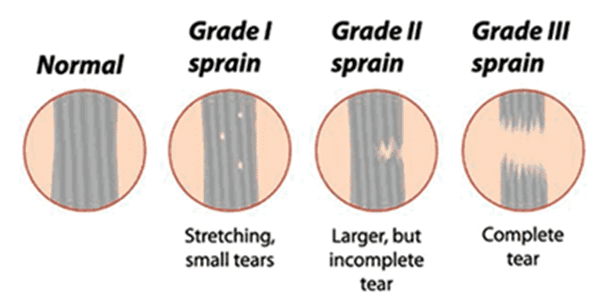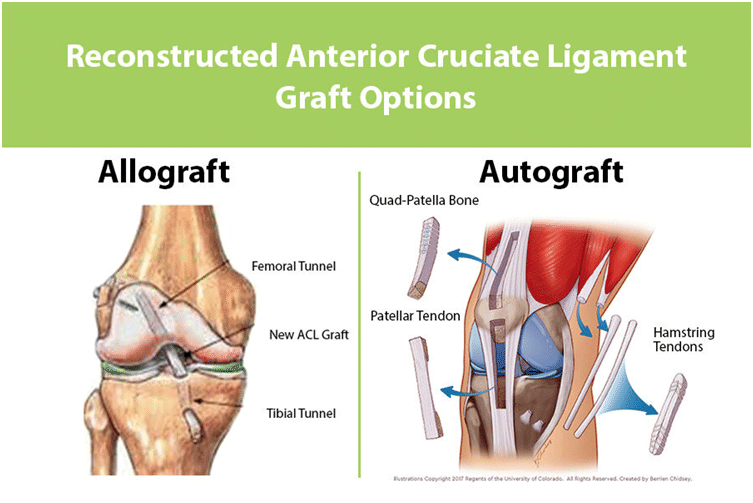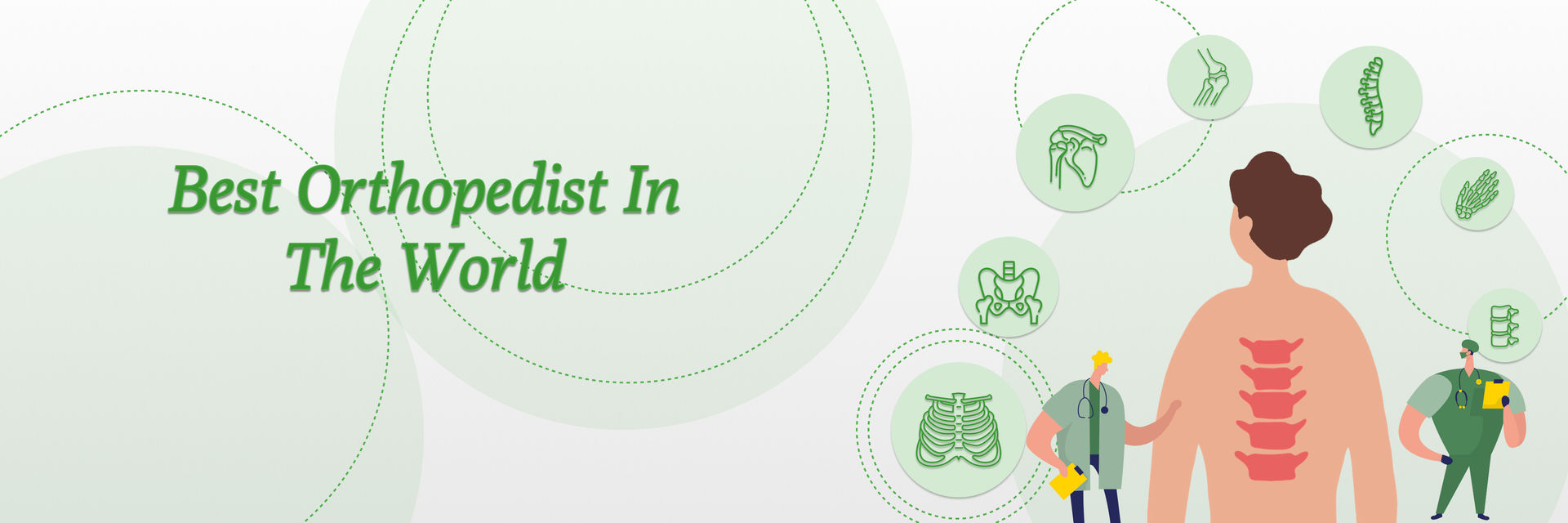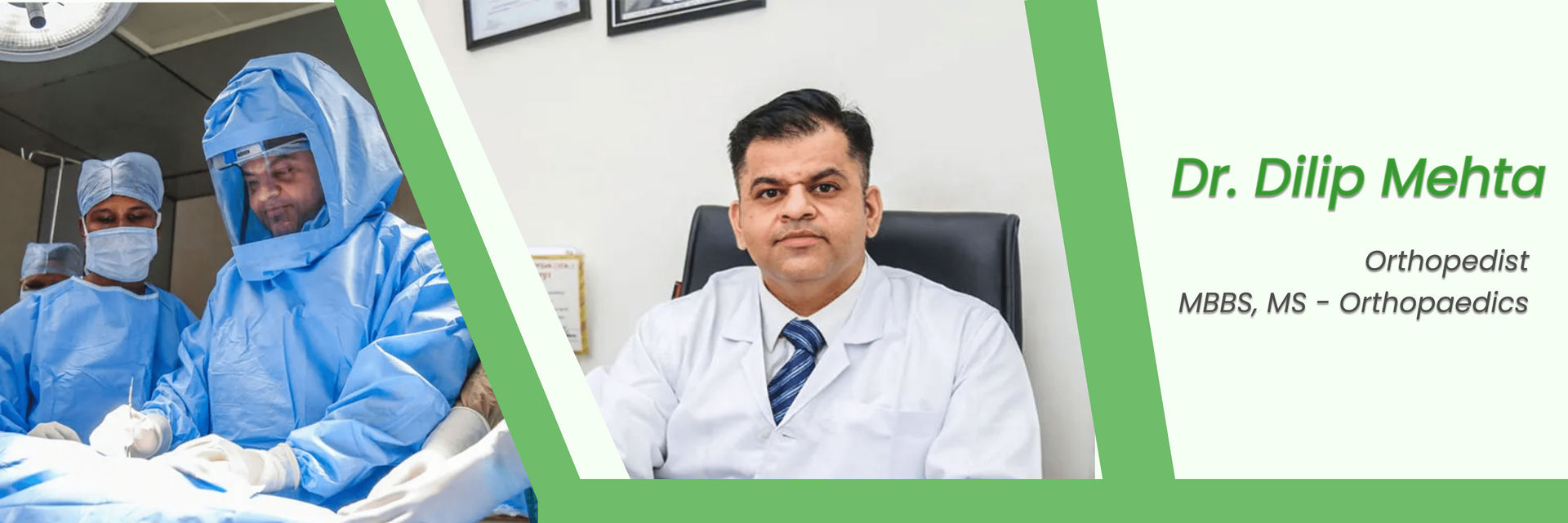Annually, about 2 Lac people suffer from ACL injury, out of which approximately 1 Lac undergo knee joint restructuring or replacement surgery.
Patients who have been in a car accident have the highest risk of developing ACL damage. 2nd highest number of ACL injuries are due to injury due to twisting, minor falls, and falls on the floor and commonly seen in males than in females.
Most ACL injuries occur in the age group between 16 to 25 years as they have a greater tendency of falling due to fast-track life and involvement in sports activities.
The rate of ACL rupture occurs in about 30 to 78 people per 100,000 population. It is one of the most commonly studied injuries by orthopedics. About 61 to 89% of athletes are benefitted with the ACL reconstruction procedure.
What happens during the ACL Injury?
A tear or sprain of ACL which is one of the strongest bands of tissue that connects the thigh bone (femur) to the shinbone (tibia).

Such types of ACL injuries are most commonly seen in sports such as soccer, basketball, football, and downhill skiing requiring quick breaks or changes in direction such as jumping and landing.
ACL reconstruction involves restructuring the ligament which allows the establishment of a connection between the femur and shinbone.
What is the role of the knee ligament?
- Acts as a shock absorber incase when the foot hits a hard surface.
- Forms a connection between the thigh bone and lower leg bones.
- Maintains the appropriate alignment of the bones.
- Averts the knee from collapsing or twisting.
- Assists in the stabilization of the knee joint.
- Prevents the knee from moving in any abnormal or harmful manner.
Understanding the Framework of the Knee and ACL
One of the four major knee ligaments is the anterior cruciate ligament. Ligaments are rope-like structures that connect and hold the knee bones together to keep them stable. Like the PCL, the ACL is located in the center of the knee.

The ACL is one of the most commonly injured knee ligaments because it is one of the primary ligaments that provide stability to the knee.
Because they form a cross in the middle of the knee joint, the ACL and PCL are referred to as cruciate ligaments. The intercondylar notch is a space where these two ligaments perfectly fit together. The size of the notch varies from person to person.
Symptoms of ACL Injury
- Knee swelling with pain will be seen within the first 24 hours of injury and it may reduce only with proper rest.
- Instability in knee and stiffness in joints
- Full range of motion is lost.
- Tenderness along the line of the joint
- Discomfort while walking and/or on standing
Causes of ACL Injury
- When an athlete places the foot and abruptly reverses direction as a result of cutting or turning movements.
- When a person falls on one leg, as in case of volleyball or basketball jump,
- When the knee is directly impacted, especially if it is stretched or flexed towards the inside.
- When a person suddenly slows down or stops running, the ligament can hyper-extend.
- The ligaments can lose flexibility as a result of repeated stress to the knee.
- Whenever the knee is bent backward or twisted, as during a fall or landing an awkward jump.
Types of ACL Injury
They are commonly classified into Grade 1, 2 and 3 injuries based on the degree of damage.
Grade 1- Mild ACL damage such as mild straining of ACL but still maintaining appropriate stability to the knee joint.
Grade 2- ACL injuries that are uncommon and refer to a strained and partially torn ACL.
Grade 3-When the ACL is entirely split in half and no longer provides any support to the knee joint, it is called an ACL tear.

Risk factors for ACL Damage
- Gender –Female athletes have three times the rate of ACL injuries as men athletes. While the exact cause is unknown, differences in muscular training, control, and strength could be one factor.
- Participation in certain sports – Basketball, soccer, football, volleyball, downhill skiing, lacrosse, and tennis are all sports where ACL ruptures are common. Cutting, turning, and landing on one leg are all examples of sports that demand frequent and abrupt deceleration.
- Previous knee damage- There is a 15% higher chance of tearing a normal ACL in people with a history of a knee injury.
- According to the research, the risk of knee injury is the highest during the first year after the previous one. The likelihood of an ACL rupture in the opposite increases once the injury has occurred.
- Age- Between the age of 15 and 45, the likelihood of ACL tear is high, which is attributed to a more active lifestyle and increased engagement in sports.
What procedures are performed for the evaluation of ACL injury?
- A physician diagnoses the ACL injury with the help of medical history and by performing a physical examination.
- During the physical examination, the doctor can examine the degree of motion and determine the presence or absence of ACL tear.
- As ACL tears are commonly linked to injuries to other components in the knee, like cartilage and collateral ligaments, a thorough examination is required.
- In case of any fractures, X-rays are performed.
- MRI image of the knee may be performed.
- In case the history and investigation are unconvincing, the scan can be used for ruling out an ACL injury.
Treatment of ACL Injury
The key to managing a patient with ACL injury is with RICE – Rest, Ice, Compression and Elevation.
The treatment option is chosen depending on the symptoms of the patient, physician's evaluation, remaining development in the growth plates, kind of ligament injury and type of sports activity.
A. Non-invasive -
In case of mild ACL damage, noninvasive therapy is considered the best option, including first aid, pain and inflammation-reducing medications, immobilization or knee bracing, and physical therapy. With it, the patient can gradually return back to routine activities and sports.
In case of minor injury, first aid with ice on the knee, the elevation of leg and staying off from the feet for a while can reduce the pain and provide a temporary relief from the strain. A wrap bandage around the knee can help in reducing the swelling and crutches can allow keeping the weight off the knee.
Pain and inflammation reducers can assist in reducing the ache and inflammation.
Usually, the physician will prescribe over-the-counter medications for minor to moderate relief, but in case of severe pain, steroid medication will be advised.
A knee brace is a good option and can be used while running or playing sports as it provides extra knee support.
With physiotherapy sessions, the patient can gain back the strength in the muscles and this can assist in regaining a full range of movement.
B. Surgical -
Individuals with a grade 3 or total ACL injury should seek for surgical therapy. Surgical options may differ depending on the type of ACL injury, whether the patient's growth plates are open or closed, and the type of ACL.
Prevention from ACL Injury
- Avoid sports like football and rugby that demand tackling.
- To reduce the risk of twisting your knee, exercise on level surfaces.
- To relieve pressure on the knees, maintain a healthy weight.
- Combine both weight training and cardiovascular workouts.
- Warm up before exercising, gradually increase the intensity, and stretch afterward.
- Wear comfortable shoes and use necessary safety equipment during the sports activities.
About ACL reconstruction procedure
ACL reconstruction surgery is performed for restructuring of the rupture knee tissue with the help of minimally invasive arthroscopic techniques. Which combines fiber optics, small cuts and small instruments which are used.
It is an outpatient treatment procedure which allows the patient to be discharged on the same day.
Procedures for ACL reconstruction
There are 2 different techniques used:
A. Extra-articular
· Extra-articular reconstruction has been performed as a stand-alone procedure or to supplement an intra-articular procedure.
· In cases of extreme anterior instability, this method is combined with intra-articular reconstruction.
B. Intra-articular
· This procedure involves creating a drainage opening in a joint while preserving the vast medialis muscle's connection to the patella.
· The tendons, iliotibial tract, and menisci are among the tissues or grafts used for the anatomical repair of the damaged ACL.
Types of ACL (intra-articular) Surgery
The main goal of the Surgery is to return the back of the knee in a firm position and give it a full range of motion.
Four types of grafts are suggested in the ACL surgery, which includes:
A. Autograft – It involves the use of tendon from the other knee, hamstring or thigh.
- Patellar tendon – This is the widely used graft for ACL reconstruction. The graft is taken from the third center of the patellar tendon with bone from the superficial part of the patella (kneecap) and bone from the tibia(shin-bone).
Some of the advantages include improved knee stability, speedy assimilation and a lower percentage of re-injury. It is usually recommended for athletes or who have a previous history of a failed ACL repair.
- Hamstring tendon – 2 out of 5 hamstring tendons are used to reconstruct ACL as there is no requirement for harvesting the bone with tendons by the orthopedic surgeon.
Some of the advantages include knee firmness, small cuts during ACL surgery and less chance of an extended period of knee ache.
This is usually performed in young patients with an active lifestyle who often need to kneel.
- Quadriceps tendon – In this, a graft from the thigh tendon is taken along with the bone from the patella (kneecap), having bone at one end and soft tissue at another end. It is considered to be the most reliable graft among other types of allograft but is generally not used.
The advantage of a thigh (quadriceps) tendon graft is that it decreases the long-standing pain associated with the knee in comparison to a kneecap (patella) graft
B. Allograft – In this type of grafting, the tissue or tendon is taken from a deceased donor. Most important benefit associated with this type is the requirement of a single cut, less time for operation, decrease in pain and post-surgery speedy recovery of the patient. It is shown to provide a pleasing advantage to the patient.

C. Synthetic graft – It involves the use of artificial materials such as silver fibres, silk, carbon fiber and Teflon for replacement of the damaged tendon. The artificial ligament is made using synthetic material and undergoes pre-surgery trials for checking its performance
D. Xenograft– Animal grafts are used to create the grafts. This graft is reserved from the connective tissue belonging to an animal or other than a human source. Xenograft is expected to be of great value in the coming future.
Risk factors of ACL reconstruction surgery
- Restructuring of the knee with Surgery consists of certain risks, which include:
- Bleeding and blood clots
- Disease transmission if the graft used is of a deceased person
- Continued knee pain, stiffness or weakness
- Infection
- Loss of range of movement
- Improper healing in case the immune system rejects the graft.
Complications of ACL reconstruction Surgery
In about 75 to 97% of cases show positive outcomes with ACL restructuring surgery.
However, certain complications are being shown to be associated with it, which include infection, hemarthrosis, deep-vein thrombosis and pulmonary embolism.
Complications are broadly divided into 5 which include: complications related to rupture and migration (fixation device), tibial or femoral side fractures, bacterial and fungal infections (mycobacterium and mycosis), vascular and nerve injuries.







